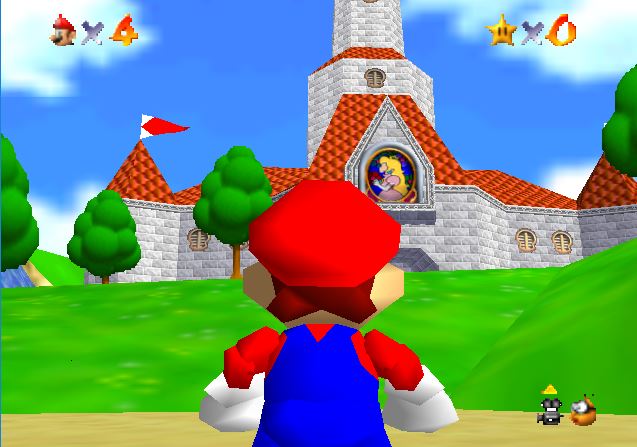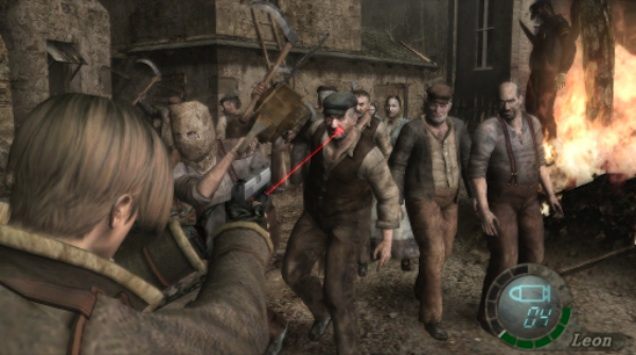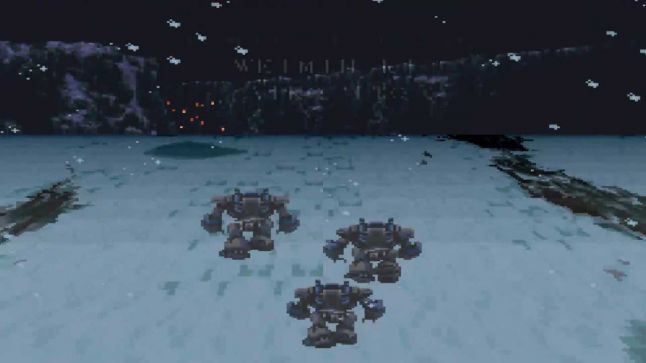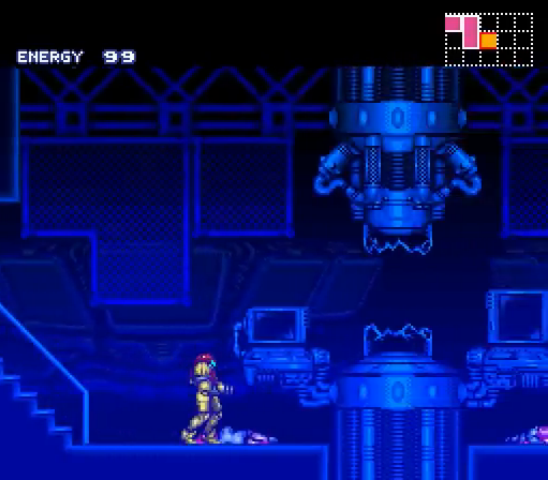7 entry levels that all game developers need to learn

Starting the game is a critical stage. It not only introduces the characters and the plot, immersing them in the atmosphere, but can also teach how the game works - control, basic mechanics, encouraged and disapproved types of interactions, the nature of the conflict, and so on.
It is therefore a little surprising that many games have problems in implementing the intro scenes. Some tire with detailed instructions for any reason. Others go to the other extreme, believing that players intuitively get comfortable with the controls and systems (their maximum is the splash screen with the control layout on the boot screen). Many start too slowly - they explain all the game systems well, but they forget to show the reason why the player should study them.
')
The first levels are difficult. Therefore, we asked several developers to give examples of games in which they were made correctly. Seven games of their choice maintain a balance between helping players in learning the game and setting the atmosphere for several hours of plot.
1. Safe Zone Super Mario 64

Nintendo has a special skill in creating affordable game design. Her main franchise shows one of the best examples of learning through the game. In the original Super Mario Bros. the players, experimenting, mastered the basic mechanics in a few seconds - the crosspiece moves Mario, colliding with enemies kills him, jumping on top of them, we destroy them. However, a new difficulty appeared in the game on Nintendo 64: for most players, it was highly likely to become one of the first polygonal 3D games. Therefore, they had to learn how to control the camera. And since it was essentially an open world, they could do anything there.
Nintendo’s solution was simple: "[Mario 64] provides players with an interesting, safe space in which you can get comfortable with your control before getting into the castle," says David D'Angelo of Yacht Club Games. He also emphasizes that the Bob-omb zone is “an amazing test of all the platformer elements that the player will need in the entire game.” This entry level, in a carefully selected open world style, introduces the player step by step to each mechanic and concept that is needed to complete the game. “In addition,” D'Angelo continues, “the castle, the gardens, the paintings and other elements create a magical sense of wonder.”
The lesson is: if your game has a basic mechanics, the development of which will cause difficulties for most players, it will be useful to start from a safe place in the game world: with minimal threats and enough time to research, test and retest your knowledge.
2. Bloodthirsty villagers from Resident Evil 4

David D'Angelo believes that the introductory level of Resident Evil 4 stands out from the rest of the games in this series of survival horror. He says that the game "hooks" from the very beginning. The five-minute non-interactive cinematic insert, accompanied by the voice of the main character (who does not seem to know much more than the player), goes directly to the game mission.
Without any details, the player, armed to protect only with a knife and a pistol, must enter a dark house in which the host will unexpectedly attack him (after a short conversation). Then villagers begin to hunt it from all sides with pitchforks and axes, aggressively trying to kill. Then the player must survive the deadly sprint through the whole village.
“It is impossible to make the complication more exciting, interesting, frightening and surprising, it simply forces to play the game,” says D'Angelo. It is extremely important that, despite the tension, the player has enough time to get comfortable on the outskirts of the village and get acquainted with the key features of the game in Resident Evil, and especially this part.
The lesson is that it is not necessary to “hold the player’s hand” as a child, simply because he needs time to master the mechanics. As early as possible, push it into the plot, especially if your game is about survival and is connected with tension. But let him take a breath.
3. War, slavery and amazing fur costumes in Final Fantasy VI

“Few games start with action scenes,” says Axiom Verge creator Tom Happ. In particular, in most RPG games, a few hours gradually immerses the player in the world, giving him simple quests, allowing him to explore the city, make purchases and chat with the residents. But Final Fantasy VI immediately confronts the player with the sinister and powerful side of the war. “You start the game in super-powerful mech suits that can kick ass anybody,” continues Khepp. Walking around the city and shopping are being read AFTER the player defeats the boss and after another big battle with the Muggles. "
The player must master the basic mechanics, driving the furs, go over to the side of the thief from the resistance forces, then master the basics of the combat system, fleeing the evil empire with a wounded slave girl who was in one of the furs. Right off the bat, the game sets the atmosphere, introduces the story, the two main characters and the moral complexity of the game. “I have always perceived this game as a James Bond film or Indiana Jones, which begins with the denouement of one of the previous adventures. A player should not fall asleep, waiting for the opportunity to draw the sword for the first time, ”concludes Hepp. (David D'Angelo notes the same thing in Final Fantasy VII, which also immediately immerses the player in a game mission. She introduces the intrigue of history, teaches the new combat system and allows the player to feel like a veteran, not a novice.)
The lesson: sometimes it's easier to tell the story story, starting to play for the bad guys. It is often more convenient to study mechanics, having space for errors without the danger of getting Game Over. Often the story is more interesting when it begins with the denouement of the characters' previous adventure.
4. Unobtrusive adaptation to Mega Man X

Games of the Mega Man series have always fantastically successfully taught the player new concepts. Each game with the help of high-quality level design shows the player how everything works. Then she checks whether he understood everything, and after that she goes on to the tests. But a particularly good example is the Mega Man X - a plot off from the main series for the Super Nintendo console . The game is more complex than its predecessors, but in a couple of minutes it succeeds in teaching the player almost everything he needs.
After the player has learned to move, he discovers that he can only move to the right (due to natural obstacles), then a fast moving spike (taking not so much energy) gets into it if the player does not jump over it. This skill is required to prevent the next (shooting) enemy from killing the character. This enemy is too big to jump, but you can shoot him. The player knows that Mega Man can shoot, because he shoots at the choice of the start of the game on the first screen. And then everything in this spirit, the game teaches the player everything he needs to know (bosses, sliding / jumping on the walls, the weak points of enemies, information that Mega Man has to become more powerful to defeat a big villain, etc. .). And all this is on the first level, without any prompts or instructions, only with the help of unobtrusive adaptation and level design, allowing to experiment.
D'Angelo recommends that you look at the in-depth analysis of the comparison of the original series with the Mega Man X in the Egoraptor video on YouTube (the discussion of the introductory level starts from the sixth minute).
Lesson: you can let the players themselves learn the whole mechanics of the game, and make the first level of learning without unnecessary instructions. To do this, you just need to create a world that provides clear visual / audio feedback and as soon as possible introduces the player with all the necessary information.
5. Simple Thumper Complexity

Robin Hunicke from Funomena, a gaming studio, says she really likes the Thumper learning process. In the recently released “game of rhythm and violence,” the player controls a sparkling space bug traveling the intergalactic road through rhythmic hell filled with neon. The first levels calm the player with one joystick and one button control. The rhythm accelerates smoothly, prompts on the first jewels, corners, walls and obstacles appear on the screen (each of which requires its own combination of buttons and joystick).
Pulsating rhythms resemble the process of the game in question-answer or " Simon says " - listen to the sounds, then press the buttons when you hear them again. At the very beginning, the combinations are much simpler, which allows you to learn the system without stress. “The process is smooth, simple, but not quite primitive,” explains Hanike. "Therefore, in the game, focused on accuracy and speed of execution, it allows you to clearly imagine what the game will be about."
The lesson is: if the base gameplay cycle is based on levels with high complexity, it is quite acceptable to raise the bar from the very beginning. But it is worthwhile to leave the first level design straightforward, so that players can immerse themselves in the subject and focus on what is important.
6. Metroid / Super Metroid violating the laws of platformer

Both Metroid and Super Metroid came out at a time when most console games were active platformers with horizontal (sometimes vertical) scrolling, divided into clear levels. But the designers wanted to destroy these conventions, create a game with scrolling in all directions, consisting of rooms (rather than levels) of a continuous world, with a search for bonuses and frequent returns. In the early stages, the game is very responsive, it shows that Metroid is not like Mario or shooters like Contra .
The developers had problems in the details, but mostly both games have succeeded. From the point of view of gameplay, their initial stages are devoted to familiarization with the new set of systems. As for the story, she emphasized the atmosphere of isolation. “Like Resident Evil 4,” says D'Angelo, “[both games] make it clear from the outset what the game will be about.” Dead bodies, more recently being alive, show that something has gone wrong. Platforms encourage the player to learn the physics of jumps, and more subtle elements of level design force them to take advantage of running, squatting and shooting. (The first enemy is the boss battle, after which you must escape.)
The lesson is: if your game violates the rules, then immediately show it to the player, and make him understand it with a different level design. It is necessary to take into account that some players do not like to cooperate, and they need to be slightly pushed to the correct path.
7. Non-verbal Circle Information Design
In the abstract Circles puzzle of Jeroen Wimmer, which was included in the Experimental Gameplay Workshop last March, each level is based on the lessons of the previous one or jokingly violates its rules. The player expects this from the very beginning - the first set of levels contains only a few circles of two colors, moving or resizing in accordance with the movements of the mouse. Nothing is explained, but it immediately becomes clear that in this game the mouse moves one circle, which somehow affects the rest.
Robin Hanike pays tribute to the increasing complexity, intuitive thanks to the informative design. “Each new gameplay element is introduced through an interesting puzzle, without any explanation,” she says.
Lesson: good design is informative in itself. Players quickly learn causal relationships, themes, and mechanics if they are encouraged to explore the space of opportunity and provide clear feedback. Words are not needed.
Good introductory levels do not require instructions.
The common thing in these and other games mentioned by the developers (Portal, Zelda series, Katamari Damacy) is that they do not begin with detailed explanations. They begin with the game itself, and if they contain the text of instructions, it is unobtrusive and easy to ignore. Moreover, with the possible exception of Thumper , it is fully reproduced in the design of the levels.
Such levels from the very beginning encourage experimentation, at the slightest opportunity they test and reinforce the acquisition of knowledge. And at the same time, they determine the theme and style of the game. They outline the space of opportunity on which the subsequent levels are built.
So the next time you start creating detailed, hand-to-hand training, think: is this necessary? Or you can pass the same information passively, through the design of the first level?
Source: https://habr.com/ru/post/320484/
All Articles